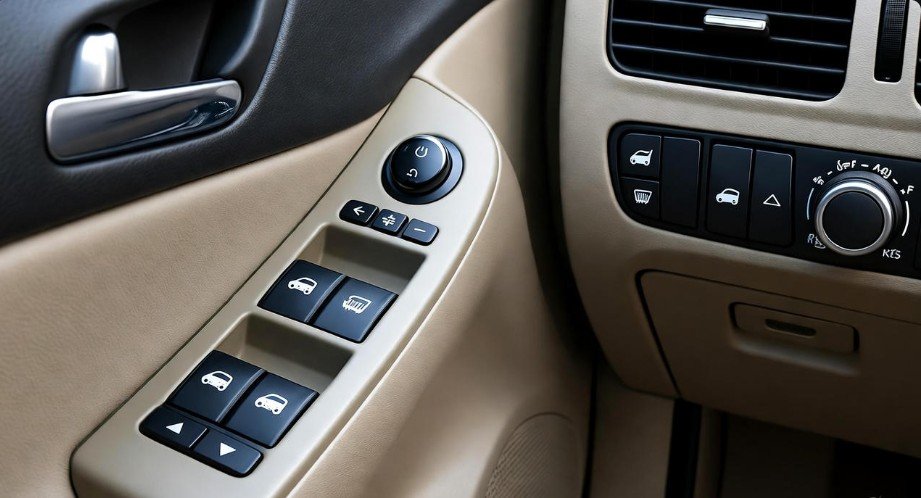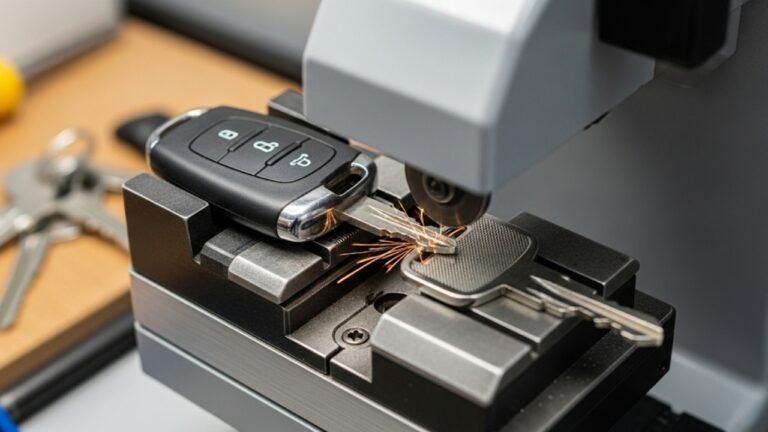How to Reset Jeep After Battery Change: Complete Guide

Changing the battery in your Jeep might seem like a simple task, but it can trigger a domino effect on your vehicle’s electronic systems. From power windows to the radio, and even the throttle body, many components depend on consistent power to function properly. After installing a new battery, some systems may act unpredictably, leaving you frustrated or unsure if something went wrong during installation. If you’ve ever experienced your Jeep’s electronics behaving strangely after a battery replacement, you’re not alone. Many Jeep owners notice subtle quirks, like slow window movement, radio reset prompts, or unresponsive key fobs. Thankfully, these issues aren’t permanent and can be resolved with proper reset procedures. This guide will walk you through step-by-step methods to reset your Jeep after a battery change, ensuring all systems return to their optimal state.
Resetting Power Windows and Sunroof

One of the most common issues after a battery change involves your Jeep’s power windows and sunroof. These systems rely on memory settings stored in the vehicle’s control modules, which may be wiped during a battery replacement. If you try to operate your windows and notice sluggish or incomplete movement, a reset is necessary. Here’s how you can do it: first, turn the ignition to the “ON” position. Next, open each window fully, followed by closing them completely. Hold the switches in the closed position for a few seconds before releasing. This simple procedure allows the window motors and control modules to recalibrate, ensuring smooth operation. Sunroofs often follow the same process, with a complete open-and-close cycle. By performing this reset, you not only restore functionality but also prevent long-term wear on motors caused by misalignment or incomplete calibration.
Many Jeep enthusiasts underestimate this step, assuming windows will “figure themselves out” after a drive. In reality, performing this reset is like teaching your Jeep a small lesson in patience: it helps the vehicle understand exactly how far the windows and sunroof should travel. Skipping this step can lead to persistent issues like jammed windows or sunroof misalignment. Taking a few extra minutes for this recalibration ensures peace of mind and prevents unnecessary trips to a mechanic.
Resetting the Radio and Infotainment System
The radio and infotainment system in your Jeep are more than just luxury features—they’re essential for modern driving comfort and safety. After a battery change, your radio may prompt for a security code or lose presets entirely, leaving you frustrated with a blank screen. To restore normal functionality, turn the ignition to the “ON” position and enter your radio security code, if prompted. This code is often found in your vehicle manual or a small card provided at purchase. Once entered, you can reset your favorite stations and adjust sound settings to your preference. For Jeeps equipped with touchscreen infotainment systems, follow the manufacturer’s reset instructions, which often involve a short press-and-hold sequence on the power button or a menu-based system reset.
Think of this reset like waking up a sleepy friend after a long nap—the system needs a gentle reminder of its preferences and settings. Skipping this step may result in minor glitches, such as unresponsive touchscreens, distorted sound, or inconsistent Bluetooth connections. A proper reset ensures that your Jeep’s entertainment and navigation features operate seamlessly, enhancing both convenience and safety while driving.
Reprogramming the Remote Key Fob
Another common issue after a battery change is a remote key fob that stops working. The fob communicates wirelessly with your Jeep, and when the battery is disconnected, the fob may lose synchronization with the vehicle’s security system. To reprogram your key fob, start by inserting the key into the ignition and turning it to the “ON” position. Press and hold the “Unlock” button on the fob, then while holding it, press the “Lock” button three times. Release the buttons and test the fob to ensure it operates correctly.
This procedure is surprisingly easy but often overlooked. Imagine trying to unlock your Jeep at a crowded parking lot only to realize your fob is dead—reprogramming it after a battery change prevents such frustrating moments. For owners with multiple fobs, repeating the procedure ensures all remotes are synchronized, avoiding inconsistencies where one fob works while another doesn’t. Keeping your remote key fob functional isn’t just about convenience—it’s a critical part of your Jeep’s security system.
Throttle Body Relearn Procedure
After a battery replacement, some Jeep models require a throttle body relearn procedure. The throttle body controls how much air enters the engine, affecting idle speed and throttle response. When power is disconnected, the engine control module (ECM) may lose calibration, leading to rough idling or delayed acceleration. To perform a relearn: turn the ignition to the “ON” position without starting the engine and wait two minutes for the throttle body to initialize. Turn the ignition off for at least 10 seconds, then start the engine and allow it to idle for three minutes. This step allows the ECM to recalibrate the throttle and adapt to real-time engine conditions.
Skipping this relearn procedure can result in jerky acceleration, uneven idle, or check engine lights, which can be alarming after a simple battery swap. Think of it as helping your Jeep take a deep breath after a momentary power interruption—it ensures the engine runs smoothly and responds accurately to your input. Completing this process not only restores normal throttle response but also optimizes fuel efficiency and reduces engine strain over time.
Clearing Diagnostic Trouble Codes (DTCs)
Finally, it’s wise to check and clear any diagnostic trouble codes (DTCs) after a battery change. Even minor disconnections can trigger stored codes in your Jeep’s onboard computer. Using an OBD-II scanner, connect to your vehicle’s diagnostic port, follow the prompts to clear stored codes, and then start the engine to ensure no new codes appear. This step acts as a clean slate, allowing your Jeep’s computer to monitor systems accurately without being distracted by old, irrelevant alerts.
Clearing DTCs is like resetting a cluttered digital calendar—it ensures you’re only notified about current issues, not old ones that no longer apply. This process is especially important if your Jeep experienced any minor glitches during the battery swap, as lingering codes can lead to unnecessary worry or improper troubleshooting. A cleared system provides peace of mind and ensures your Jeep’s electronics are functioning optimally.
Here’s a quick summary table of the main reset procedures:
| System | Reset Method | Purpose |
|---|---|---|
| Power Windows/Sunroof | Full open/close cycle with ignition ON | Recalibrate motors and switches |
| Radio/Infotainment | Enter security code, reset presets | Restore sound and navigation functionality |
| Remote Key Fob | Hold unlock + lock sequence | Re-synchronize fobs with vehicle |
| Throttle Body | Ignition ON idle, off, restart | Relearn throttle response and idle |
| DTCs | OBD-II scanner | Clear old trouble codes and errors |
Additional Tips for a Smooth Jeep Reset
Resetting your Jeep after a battery change is more than just following technical steps—it’s about understanding your vehicle and anticipating minor quirks that can appear after power interruptions. One practical tip is to drive your Jeep gently for the first few miles after performing all resets. This helps the engine control module (ECM) and other systems relearn real-world conditions, from throttle response to transmission shifts. During this drive, pay attention to any unusual noises, jerky movements, or warning lights. If anything feels off, revisit the reset steps or consult a professional.
Another often overlooked tip is to check all fuses and connections after replacing the battery. Sometimes, vibrations during battery installation can loosen a connector or partially disconnect a fuse. A quick inspection ensures that no minor oversight becomes a major headache. Treat this as a proactive maintenance habit—it’s like double-checking your backpack before a long journey; a small precaution can save significant trouble later.
Why Proper Reset Matters
You might wonder why a simple battery swap could create so many challenges. Modern Jeeps are packed with electronics that communicate constantly. When power is lost, these systems can lose their “memory,” causing minor malfunctions that accumulate if not addressed. By performing these resets, you protect your Jeep’s longevity and performance. Ignoring these steps can lead to persistent idling issues, erratic window operation, or even reduced fuel efficiency.
Think of your Jeep as a living ecosystem: each system communicates with others, like a team of workers coordinating a complex project. Resetting after a battery change ensures everyone is back on the same page. It’s not just a technical requirement; it’s a form of vehicle care that preserves performance, safety, and comfort. A well-reset Jeep responds predictably, keeps electronics synchronized, and prevents frustration for the driver.
Common Mistakes to Avoid
Even experienced Jeep owners sometimes make mistakes during post-battery resets. Here are some common pitfalls:
-
Skipping the window/sunroof reset: This leads to incomplete calibration and motor strain.
-
Ignoring the throttle body relearn: Can cause rough idle, poor acceleration, and engine warning lights.
-
Not reprogramming all key fobs: Leaving one fob unsynced can create confusion and security risks.
-
Failing to clear DTCs: Old diagnostic codes may cause misdiagnosis of non-existent problems.
Avoiding these mistakes requires patience and a systematic approach. Treat each reset step as a mini-checkpoint, not a mere formality. By giving attention to detail, you ensure your Jeep remains reliable, safe, and enjoyable to drive.
Understanding Jeep Electronics Post-Battery
Jeep vehicles, especially modern models, rely heavily on an interconnected web of electronics. From body control modules to engine sensors, nearly every component has a memory function that can be disrupted during battery replacement. For example, power windows rely on a module that records fully open and closed positions, while the ECM monitors throttle response and idle patterns. Even your radio stores security codes and user preferences that may vanish if the battery is disconnected.
By taking the time to reset your Jeep systematically, you essentially “reboot” its digital brain. It’s like helping a friend recover after a power nap—they need a moment to get oriented, remember routines, and respond effectively. A proper reset ensures that all systems are harmonized, reducing the risk of glitches or mechanical strain caused by miscommunication between modules.
DIY vs Professional Assistance
While most Jeep resets after a battery change can be done at home with patience and attention to detail, some situations may require professional help. If your throttle body behaves erratically, warning lights persist after DTC clearance, or the infotainment system refuses to respond, visiting a certified Jeep service center is recommended. Professionals have specialized tools, software, and experience to diagnose subtle issues that might go unnoticed during a DIY reset.
The good news is that for the vast majority of battery swaps, a careful owner can perform resets without trouble. Think of it like maintaining a garden: most of the work is straightforward, but sometimes you need expert guidance to prune a stubborn branch or treat an unexpected pest. Similarly, knowing when to DIY and when to consult a mechanic ensures your Jeep remains healthy and trouble-free.
FAQs About Resetting Jeep After Battery Change
1. Do I need to reset my Jeep after every battery replacement?
Yes, most electronic systems will require some form of reset after a battery change to function optimally. Skipping resets may cause glitches or persistent warning lights.
2. Can I skip the throttle body relearn?
It’s not recommended. Skipping this step may lead to rough idle, delayed throttle response, and reduced fuel efficiency.
3. How long does it take to reset all systems?
Typically, it takes about 20–30 minutes for a complete reset, depending on your Jeep model and whether you are doing the throttle body and key fob procedures.
4. Will I lose all my radio presets?
Yes, a battery change can erase your radio settings. You’ll need to re-enter your favorite stations and sound settings.
5. What if my key fob doesn’t work after following the reset steps?
Try reprogramming the fob again. If it still doesn’t work, the fob battery may be low or the fob may need professional reprogramming.
6. Do I need an OBD-II scanner to clear DTCs?
Yes, an OBD-II scanner is the easiest way to clear codes and ensure your Jeep’s computer has a clean slate. Some service centers can also perform this for you.
7. Is this reset procedure the same for all Jeep models?
While most steps are similar, some models may have unique requirements. Always refer to your Jeep’s owner manual or manufacturer instructions for model-specific procedures.
Conclusion: Keeping Your Jeep Happy After a Battery Change
Replacing a Jeep battery is straightforward, but the real work begins afterward. Resetting your power windows, sunroof, radio, remote key fob, throttle body, and clearing diagnostic codes ensures that your Jeep operates smoothly and reliably. By following these steps and adopting careful habits, you prevent minor glitches from snowballing into bigger issues. Think of it as a ritual of care: giving your Jeep a little attention after a battery swap keeps it in peak condition, maximizes longevity, and ensures a worry-free driving experience.
Resetting your Jeep isn’t just a technical requirement—it’s a chance to reconnect with your vehicle and understand how its systems interact. By approaching the process with patience and attention to detail, you’ll maintain both performance and peace of mind. Your Jeep will thank you with smooth drives, reliable electronics, and fewer unexpected headaches in the months to come.


![Window Tinting Laws in Virginia [Updated, 2023]: What Every Driver Needs to Know Before Hitting the Road 5 Window Tinting Laws in Virginia [Updated, 2023] What Every Driver Needs to Know Before Hitting the Road](https://aautomotives.com/wp-content/uploads/2025/10/Window-Tinting-Laws-in-Virginia-Updated-2023-What-Every-Driver-Needs-to-Know-Before-Hitting-the-Road-768x412.jpg)



